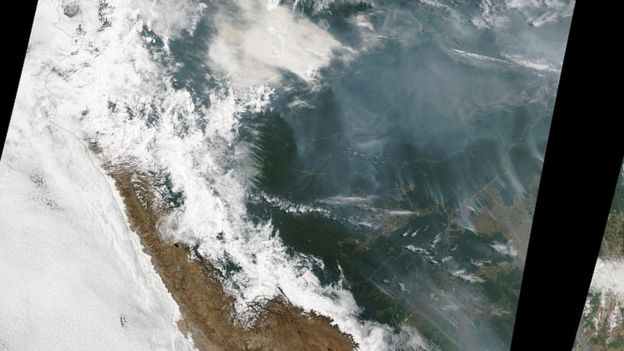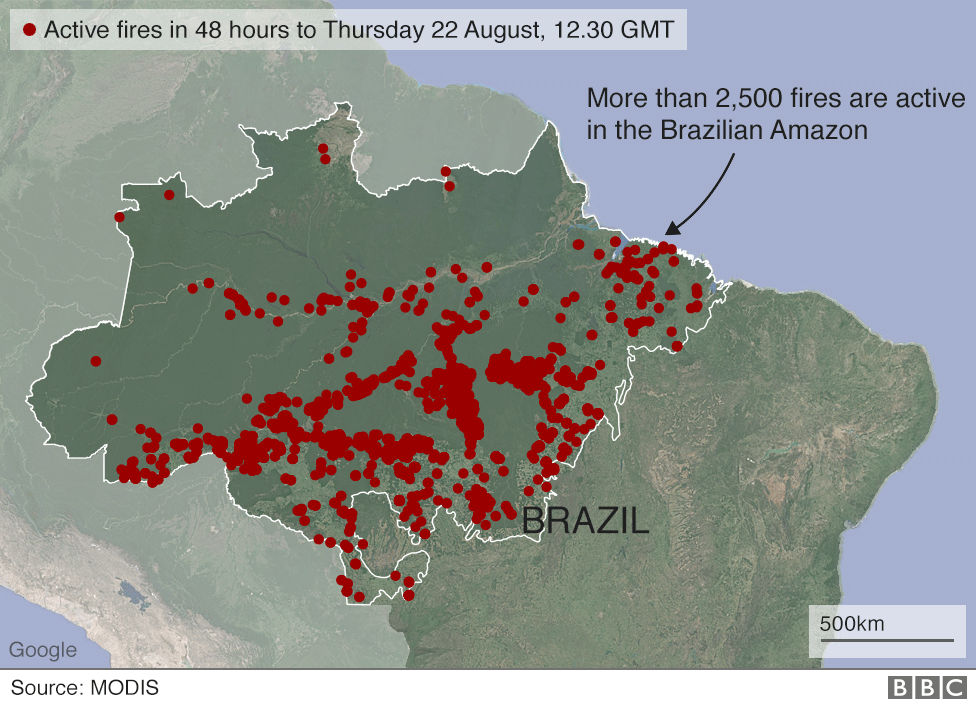The French and German leaders say the record number of fires in Brazil's Amazon rainforest is an international crisis which must be discussed at this weekend's G7 summit.
German Chancellor Angela Merkel said the "acute emergency" belonged on the agenda, agreeing with French President Emmanuel Macron's earlier rallying cry.
"Our house is burning," he tweeted.
Environmental groups say the fires are linked to Brazilian President Jair Bolsonaro's policies, which he denies.
Mr Bolsonaro has also accused Mr Macron of meddling for "political gain". He said calls to discuss the fires at the G7 summit in Biarritz, France, which Brazil is not participating in, evoke "a misplaced colonialist mindset".

Smoke from fires burning in the Amazon can be seen from space. NASA
The largest rainforest in the world, the Amazon is a vital carbon store that slows down the pace of global warming.
It is also home to about three million species of plants and animals, and one million indigenous people.

Continue reading at: Amazon fires an emergency, say Merkel and Macron
German Chancellor Angela Merkel said the "acute emergency" belonged on the agenda, agreeing with French President Emmanuel Macron's earlier rallying cry.
"Our house is burning," he tweeted.
Environmental groups say the fires are linked to Brazilian President Jair Bolsonaro's policies, which he denies.
Mr Bolsonaro has also accused Mr Macron of meddling for "political gain". He said calls to discuss the fires at the G7 summit in Biarritz, France, which Brazil is not participating in, evoke "a misplaced colonialist mindset".

Smoke from fires burning in the Amazon can be seen from space. NASA
The largest rainforest in the world, the Amazon is a vital carbon store that slows down the pace of global warming.
It is also home to about three million species of plants and animals, and one million indigenous people.

Continue reading at: Amazon fires an emergency, say Merkel and Macron






